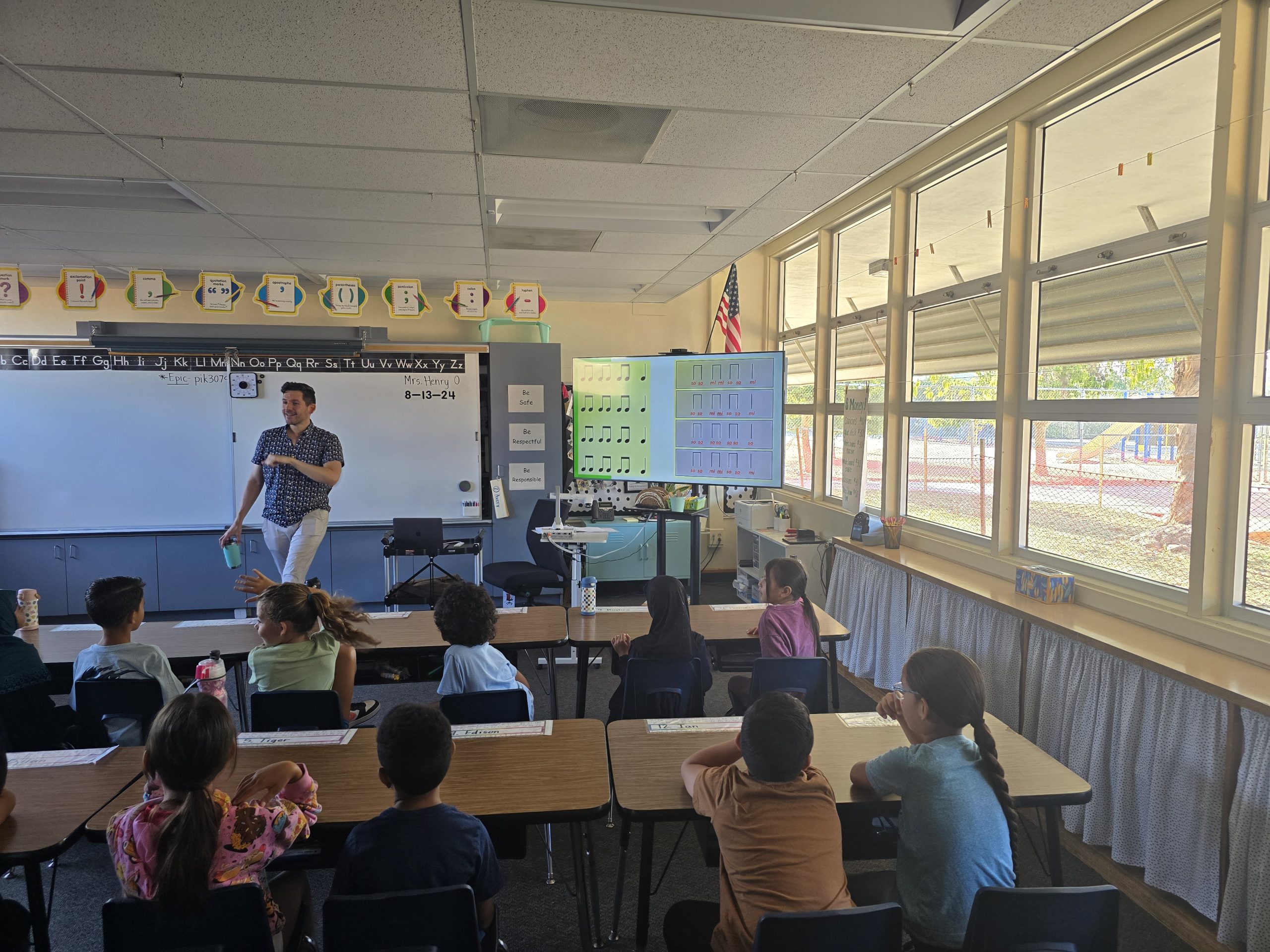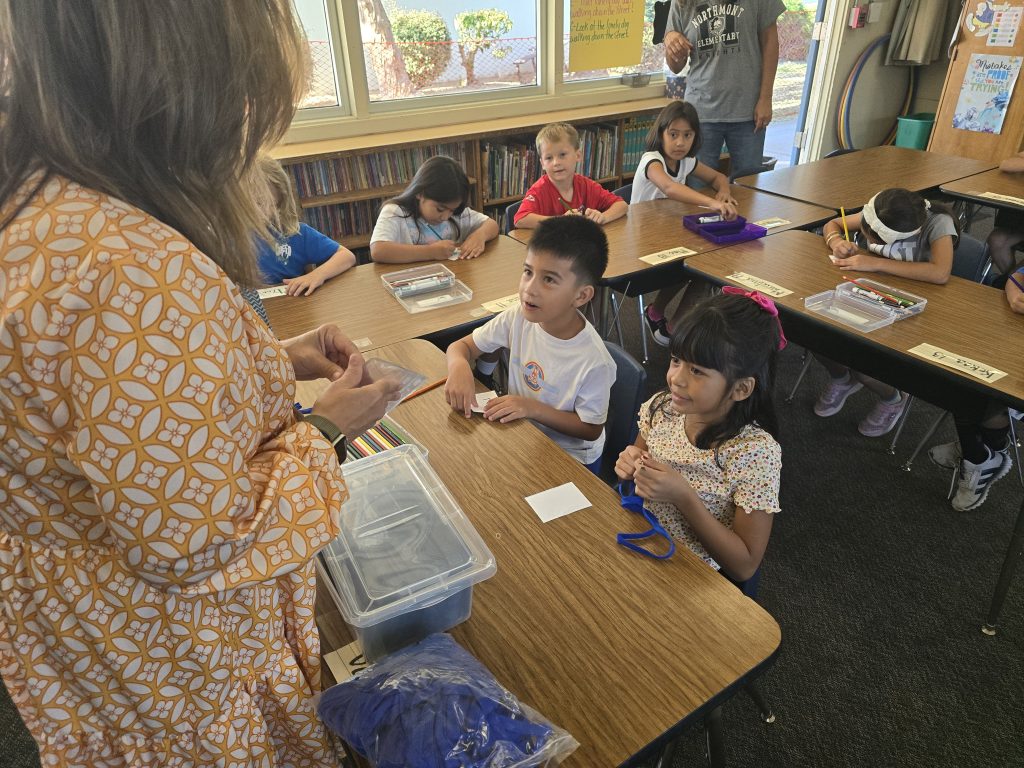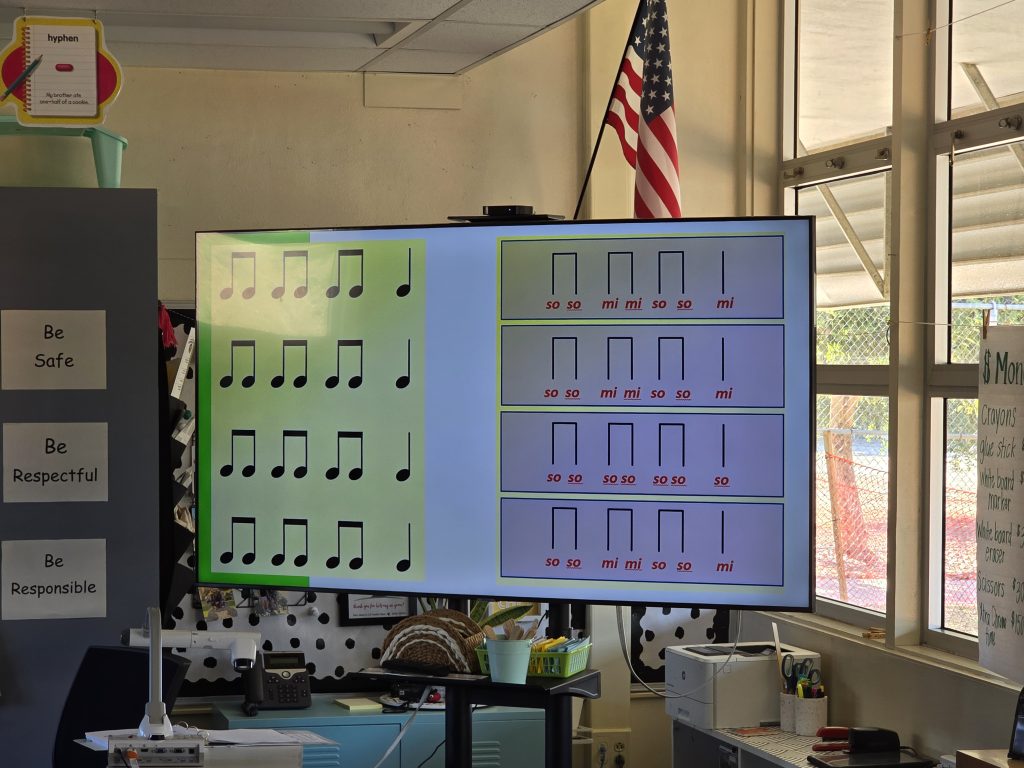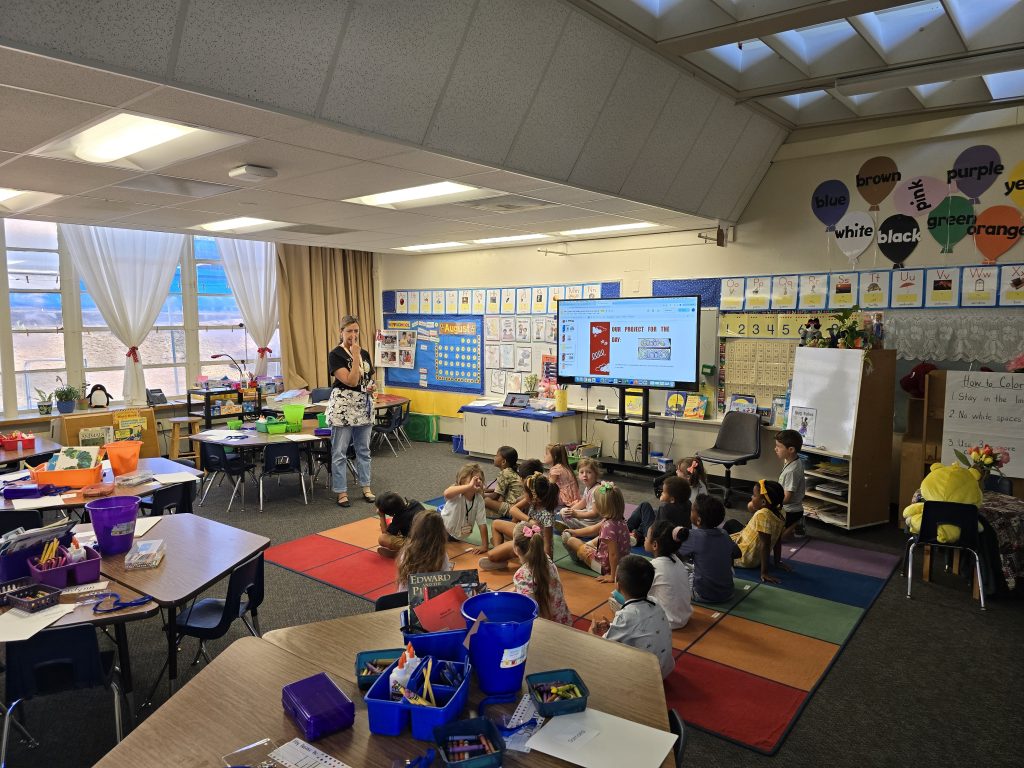Prop 28 funding helps hire art and music teachers across the TK-8 district!

La Mesa-Spring Valley School District is kicking off the school year with an exciting new Visual and Performing Arts program, thanks to recently secured Proposition 28 funds.
The program is committed to providing regular art and music education at all schools in the district, with a particular focus on elementary grades. It has been designed to help students learn in different modalities by utilizing the arts to build learning in every subject.
Christian Tordahl heads up the new program and explains how it came about: “In November of 2022, the voters passed Proposition 28, which added a lot more funding for arts education to schools in California. Almost 65% of voters voted ‘Yes,’ which is huge because parents want arts for their kids.
“The great thing about the proposition is that it doesn’t take any money away from existing school funding as it’s from a separate part of the state budget.”
Tordahl says around 80% of LMSV’s Prop 28 funds pay for a team of credentialed arts educators, while the rest help purchase supplies, materials, and musical instruments.

Arts Education at Every Grade
While the district’s middle schools already have several elective classes in the arts, Tordahl was brought in last year to specifically plan a program around elementary, which included hiring credentialed arts teachers and assisting the middle schools in expanding existing programs.
Tordahl says the Prop 28 funds provided enough to hire eight Visual and Performing Arts teachers for the district’s 17 elementary schools – four music teachers and four art teachers – who will visit every classroom at each school site to teach all students. The funds also enabled Spring Valley Academy, a middle school, to hire a music teacher to expand the school’s arts opportunities.
“We were very fortunate to find a great mix of educators,” he says. “My goal was to find teachers who are musicians and artists first but who are also credentialed arts teachers who will bring the arts to our kids.
“They have developed sequential, standards-based lessons in music and visual arts that will enable our students to not only experience the fun of the arts but to gain deep learning throughout elementary school so they will be ready for art classes in middle school if they choose them as electives.”
Building New Skills Each Year
Both music and visual art lessons will start for students in TK/Kindergarten and continue through fifth grade, ensuring that they can develop skills and knowledge, and subsequently build on lessons.

For the music program, the TK/kindergarten curriculum will be grounded in singing. Students then learn pitch, melody, and more advanced skills and techniques as they move through the grades. All of this prepares them for music in middle school.
Similarly, the visual arts program will work on the same sequential framework that will build students’ skills and creative process as they are exposed to various media and elements of art.
“It’s all about the process over the product in the arts,” explains Tordahl. “For students to learn critical thinking skills in terms of creating something. To ask: ‘What do I want to create? How do I express myself?’
“Some kids will learn that they express themselves best visually, while others do so aurally through music. And that’s something they maybe haven’t had access to yet in schools and are struggling with. Perhaps they’re not a visual learner – they are really an aural learner, but they haven’t tapped into that modality of learning yet.”

Tordahl stresses that learning that occurs in the arts translates and enhances learning across all subjects. “All of the art forms connect directly with the emotional centers in our brain so they can help ground a student within the academic world.” Keeping students engaged in one subject can translate to others.
Case in point, Tordahl tells of a kindergarten student who had just completed their first week at school: the teacher said that the student had trouble focusing and participating every day and didn’t want to be in the classroom or learn. “And then the music teacher came in, and it completely changed,” says Tordahl. “Suddenly, the student was engaged in the lesson – singing, and apparently with a wonderful voice!
“I visited for the second class, which was the art class,” he recalls. “And when I walked in, I didn’t notice any student who may have been a challenge because this child was engaged in the art lesson. And the teacher was astounded at the change just those few minutes in the very first art lesson brought in that student.”
With success stories like that in just week one, it’s clear LSMV’s new arts program is yielding meaningful results that will carry students through their learning.

